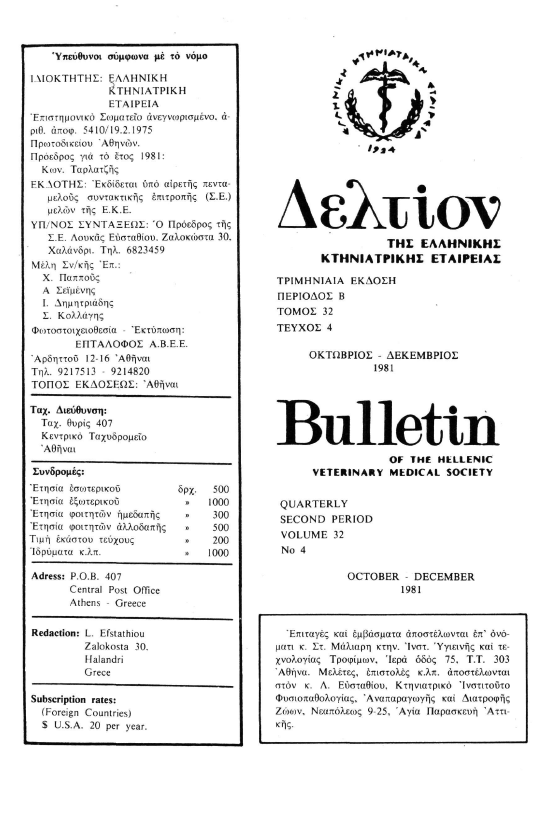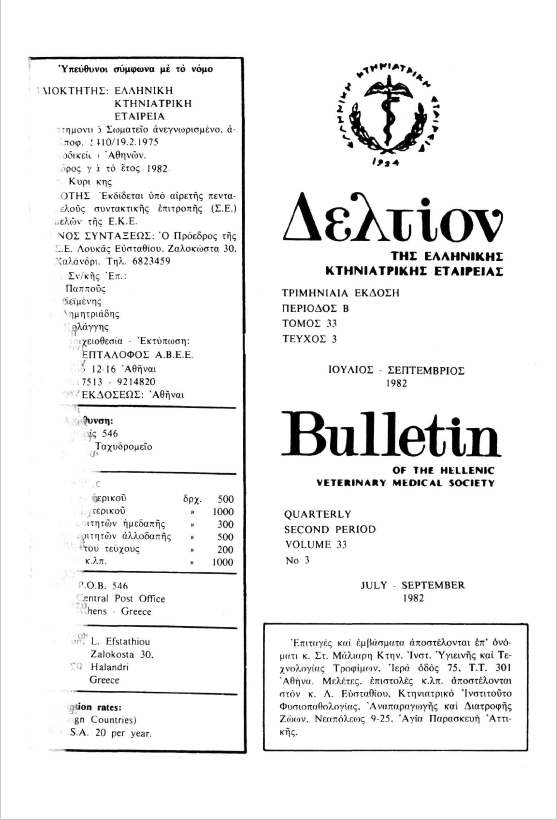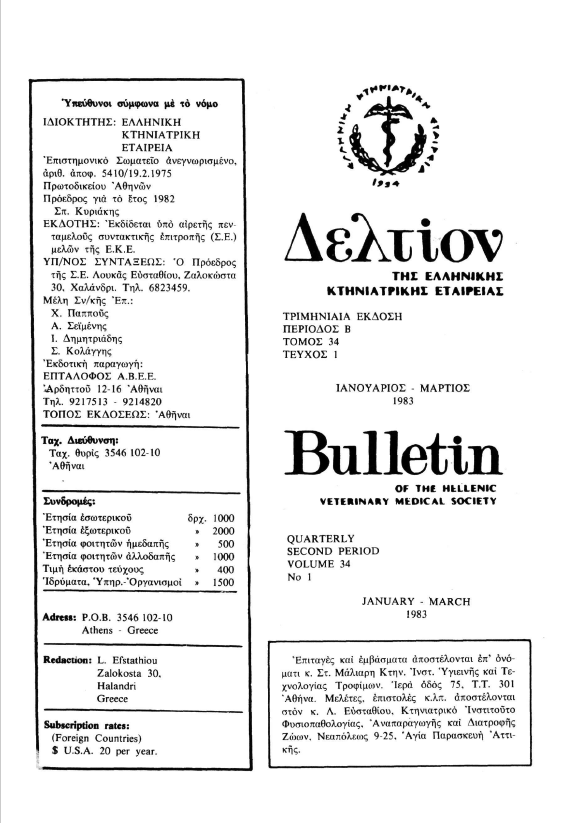Long term observations on sheep experimentally infected with Brucella Melitensis
Abstract
Six pregnant ewes were subcutaneously injected with 5 x10s live Brucella melitensis biotype 1 organisms. Observations on their serological response during the first six months post infection have been published earlier (Madad, 1979). In this paper, the observations during the following 24 month period, up to the 30th month, are reported. Four ewes that survived to the end of the experiment were still positive in the serum agglutination (titres 160, 212, 106 and 40 i.u./ml), complement fixation (titres 288, 384, 288 and 36 EEC u./ml) and Rose Bengal Plate tests. Two female lambs, born a few weeks post infection, remained negative during the present period of observation. Two rams, that were housed with the group from the 6th to the 30th month, remained negative. Three lambs, born on the 18th, 27th and 29th months had antibodies, that were considered to be of maternal origin. At the end of the experiment, brucellae were not detected by culture or guinea pig inoculation of material from the udder, uterus, retropharyngeal, internal iliac and supramammary lymph nodes of any of the surviving animals.
Article Details
- How to Cite
-
ΠΑΠΑΔΟΠΟΥΛΟΣ Ο., ΣΑΡΡΗΣ Κ., & ΠΑΠΑΝΑΣΤΑΣΟΠΟΥΛΟΣ Μ. (2019). Long term observations on sheep experimentally infected with Brucella Melitensis. Journal of the Hellenic Veterinary Medical Society, 32(4), 283–289. https://doi.org/10.12681/jhvms.21506
- Issue
- Vol. 32 No. 4 (1981)
- Section
- Articles

This work is licensed under a Creative Commons Attribution-NonCommercial 4.0 International License.
Authors who publish with this journal agree to the following terms:
· Authors retain copyright and grant the journal right of first publication with the work simultaneously licensed under a Creative Commons Attribution Non-Commercial License that allows others to share the work with an acknowledgement of the work's authorship and initial publication in this journal.
· Authors are able to enter into separate, additional contractual arrangements for the non-exclusive distribution of the journal's published version of the work (e.g. post it to an institutional repository or publish it in a book), with an acknowledgement of its initial publication in this journal.
· Authors are permitted and encouraged to post their work online (preferably in institutional repositories or on their website) prior to and during the submission process, as it can lead to productive exchanges, as well as earlier and greater citation of published work.







